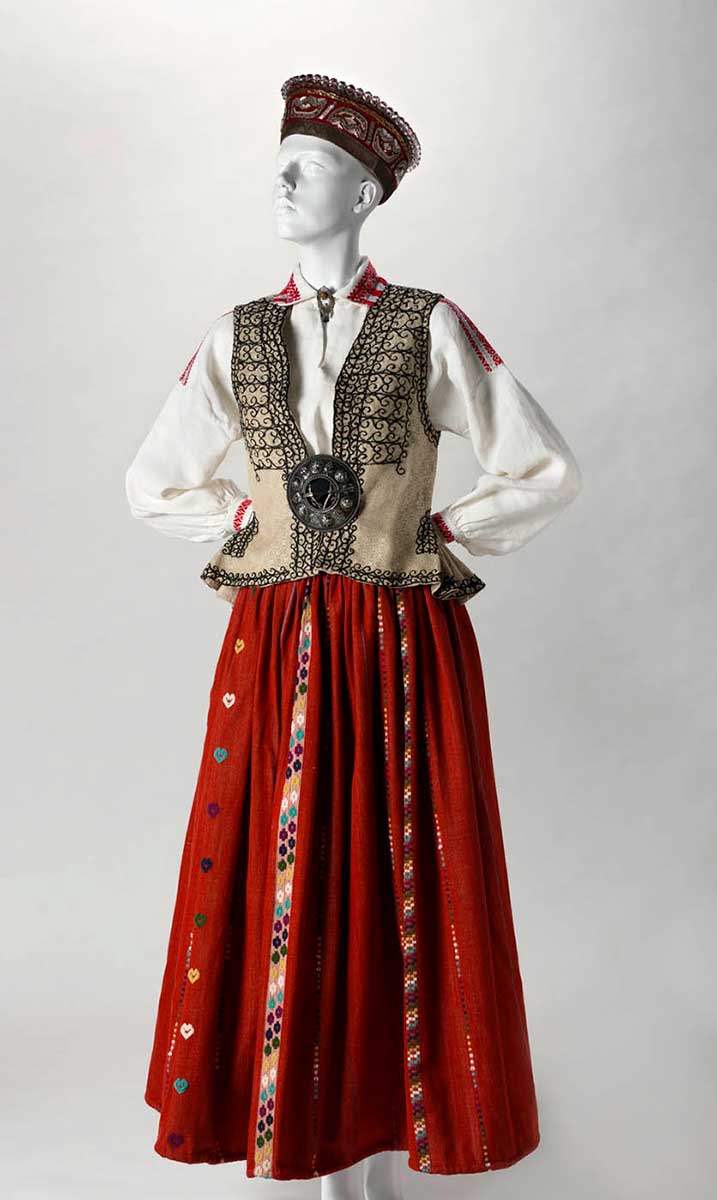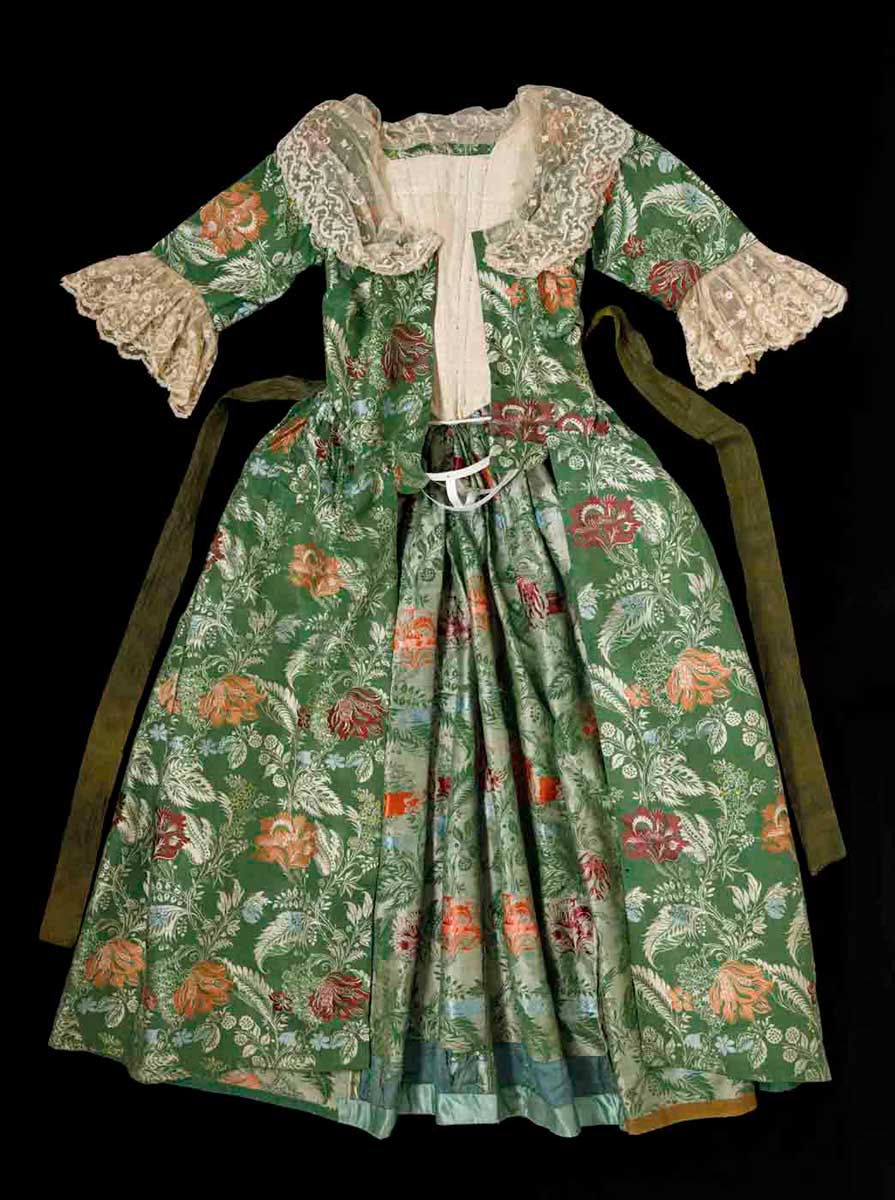Clothing can reveal so much about our history, and the Museum holds some special garments in its collection. Here are a few dresses that offer an inside look into the wearer's culture and customs.
Springfield gown
On our blog we delve into the research being undertaken to identify the origins of a 300-year-old dress from the Springfield–Faithfull family collection. The collection reveals the story of early settler William Pitt Faithfull and the generations of his family who lived at their merino sheep property at Springfield in New South Wales.
It is thought that the dress was brought to Australia by Devonshire migrant Mary Deane, who married William Faithfull in 1845, although the true origins of this dress may be more complex to uncover.
The dress was worn by generations of women who altered it to fit themselves. The true shape and character of the dress remained the same, but with every little alteration different hopes and desires found their way into the threads.
Latvian national dress

Guna Kinne made this dress over a period of 30 years, from a pattern book given to her by her father.
In 1945 Guna fled her native Latvia with her mother and sister. They took some photos, clothes and this unfinished dress with them.
Guna was one of thousands housed in displaced persons camps caused by the Second World War. She finished her national costume at Geestacht camp, and wore it for the first time at a camp dance in 1945. On that day she met her future husband.
Fearing Soviet persecution if they returned to Latvia, the family migrated to Australia and settled in Wangaratta, Victoria in 1948.
Guna wore the dress to rallies in Australia, one time to St Paul’s Cathedral in 1968 to celebrate the 50th anniversary of Latvia’s declaration of independence, and another in the 1970s to protest Australia recognising the incorporation of Latvia into the Soviet Union.
Caring for dresses and more
In this Audio on Demand program learn how to care for your precious belongings, including wedding dresses and photo albums.
The Museum’s senior textile and paper conservator Carmela Mollica provides helpful tips and tricks for preserving special textiles. For example, if you use a plastic coat hanger to store something, make sure it's polypropylene or polyethylene rather than a PVC. The chlorides in PVC can damage materials over time.
Door to store: Caring for your collection 11 Jan 2013
Door to store: Caring for your collection of paper and textiles
We’ll keep bringing objects, collections, exhibitions and programs from the vault as part of the Museum from Home experience. Stay tuned!
In our collection

